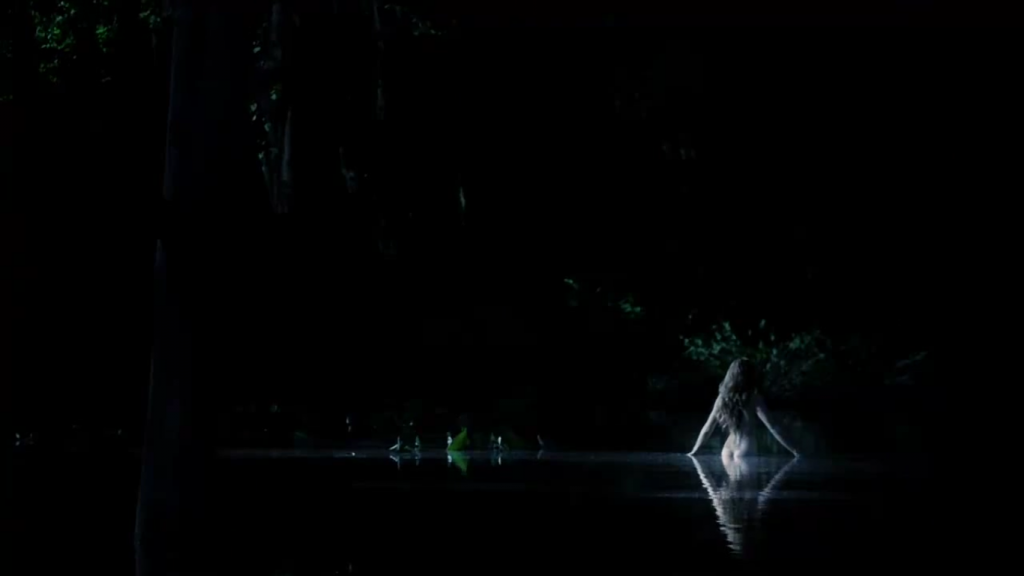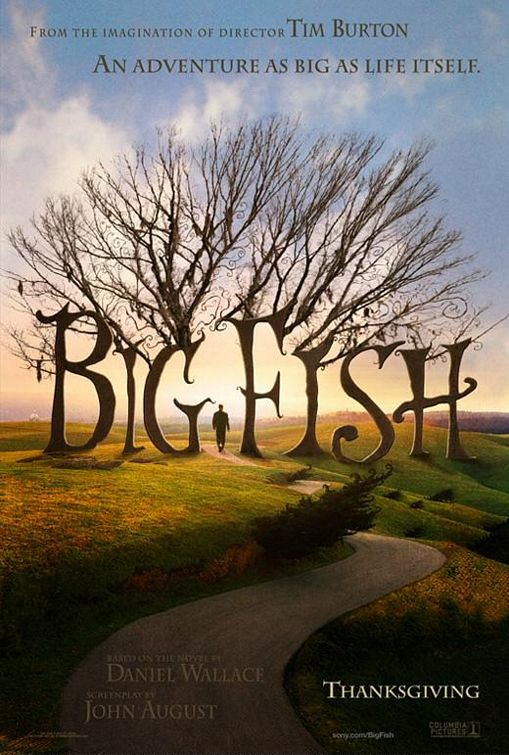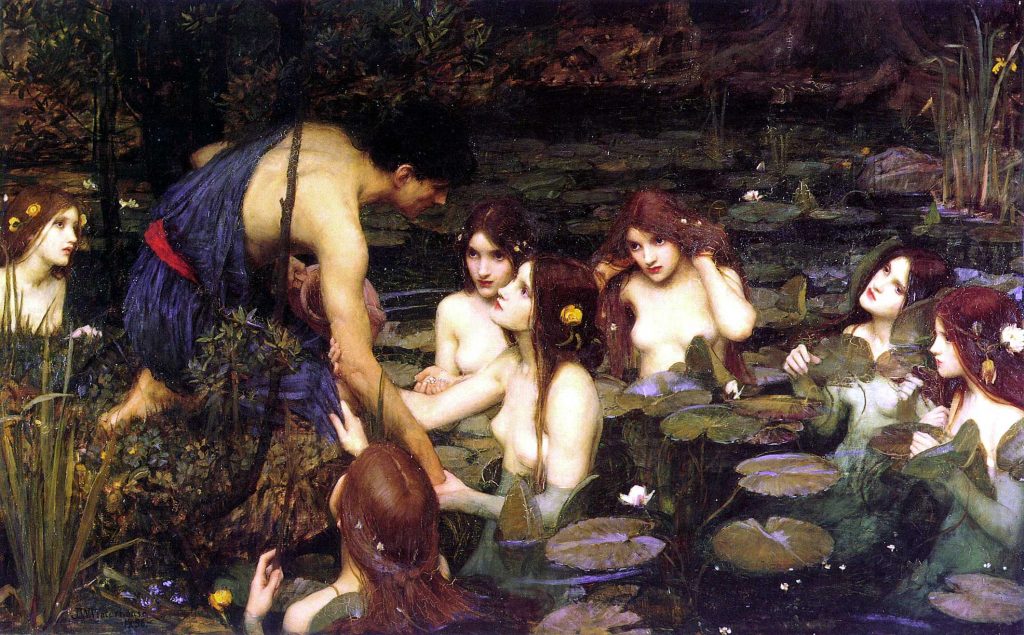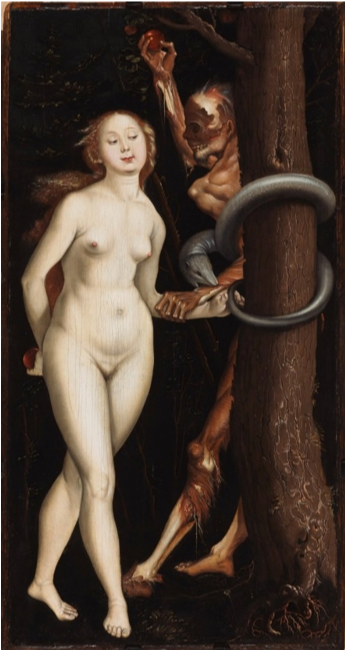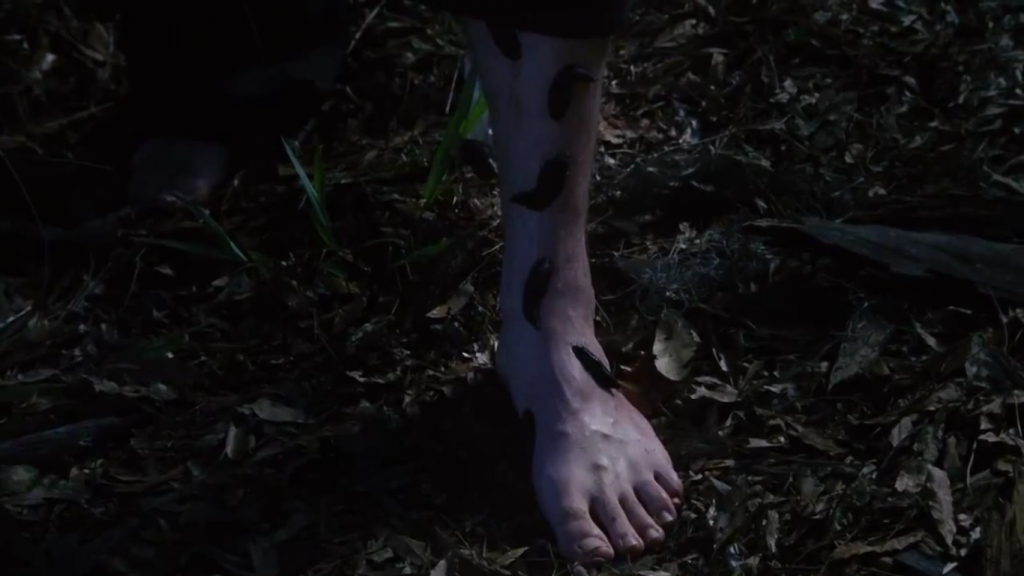Tim Burton’s, Big Fish [1] follows the life of the charismatic Edward Bloom in his search for adventure far from the confines of his small town in Alabama. Upon leaving his town, his hedonistic search for excitement becomes chaotic and animalistic as he is led primarily by his primitive desires, such as sexuality. This is particularly evident in the scene where he first witnesses the famed ‘Big Fish’ in a swamp near the secret town of ‘Spectre’, as he perceives the fish as a nude woman.
The scene begins with an establishing long shot of Edward reclined alongside a river, gazing out of the frame, literally and figuratively searching for something. It then cuts to extreme long shot of nude ‘woman’ submerged to the hip in water.
The bluey hue and soft focus of the camera provides a dreamlike glow as if Bloom is entranced by the sight, whilst the diegetic wildlife sound effects fade in favour of non-diegetic orchestral music, adding to the fantasy element. The mise-en-scene is beautiful as the whiteness of her body sets a striking contrast against the dark night. The combination of these alluring features greatly impacts the representation of animality by presenting it as a pleasurable thing. Certainly, the manifestation of his base desires in the form of a nude woman is enticing. This also reflects the appealing wildness that the fish symbolises and Edward so desperately yearns for.
The scene then cuts to a close up reaction shot of Edward noticing her; the sweet melodic music is interrupted by a low rumble of violin, rousing tension, as a snake approaches her from behind. The snake not only provides sexual connotations, as it comes from the same direction as Edward, but also visually links to Genesis with Eve and the serpent, implying danger.
The hurried cuts generate tension and reflect Edward’s panic as he goes to call out and warn the figure, yet he falters, instead choosing to dive in after it. This demonstrates Edward’s superseding animalistic side as he rejects reason and physically and metaphorically dives into following his unconscious desires. By acting on impulse, this exhibits his animality overriding his sensible ‘human’ side.
The imagery of a nude woman tempting a man into the water also has mythological connotations of sirens and nymphs, continuing with the fantastical element. Indeed, Burton’s visual rhetoric owes to the Pre Raphaelites as the figure is presented with long flowing red hair and glowing porcelain skin, set against a backdrop of water (as seen in fig 3), thus carrying with it the idealistic associations of beauty and desire. This also portrays the tantalising nature of the untamed life Edwards seeks, as the ‘fish’ lures him into the chaotic lifestyle that it embodies.
As the figure then disappears upon Edward’s approach, he asks a nearby girl where the ‘woman’ went. The girl retorts, ‘it’s not a woman, it’s a fish…fish looks different to different people. My daddy said it looked like a coon-dog he had when he was a kid’. This indicates towards people’s differing perspectives as he sees things from a sybaritic viewpoint that is rooted in sexual desire, much like an animal; whereas others view more homely comforts, such as a childhood pet. The fish therefore acts as a platform which allows him to realise this. This also draws from the theory of perspectivism, which maintains that there are many different world views depending on the individual’s perspective. This therefore challenges human superiority as animals can be seen and represented as more than they superficially appear, depending on one’s viewpoint. For instance here, the fish is presented as a catalyst of realisation as well as physically appearing like a woman.
The scene then cuts to a close up of Edwards’s leg, revealing leeches attached to him. Due to the destructive nature of the leeches, they represent the potential dangers in pursuing a life in a certain unruly manner, as it could lead to harmful repercussions.
Overall, this scene depicts a graphic presentation of the protagonist’s attempts to pursue his own wildness and animality and the potential risks of doing so. Whilst the theory of perspectivism allows the viewer to look past the appearance of the animals and delve further into what they represent, such as pleasure and danger. This scene is therefore pivotal in Edwards’s exploration and understanding of one’s animalistic nature.
Word count: 798.
[1] Big Fish. Dir. Tim Burton. Columbia Pictures. 2003.
